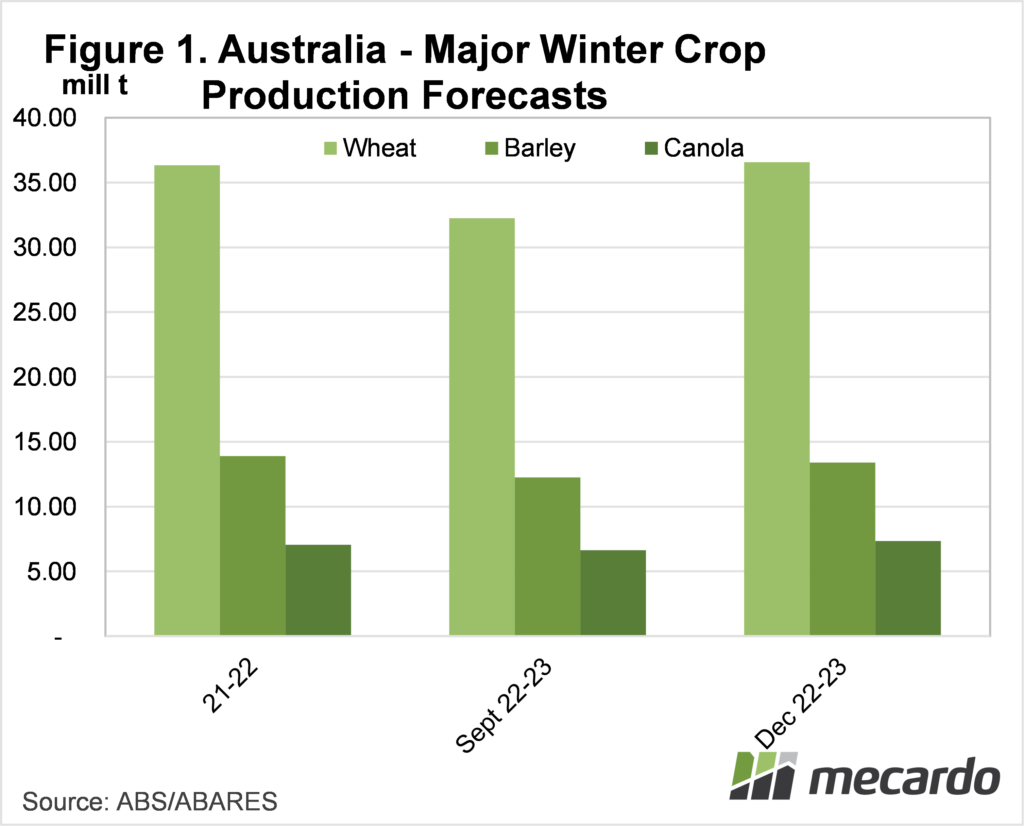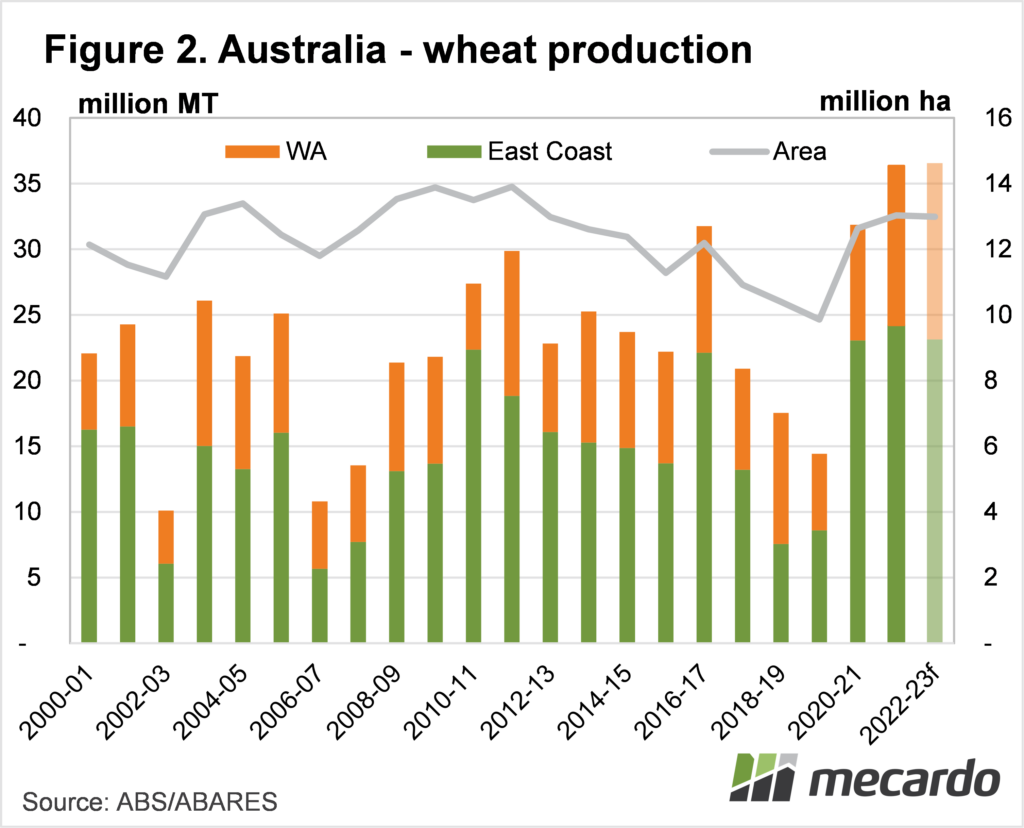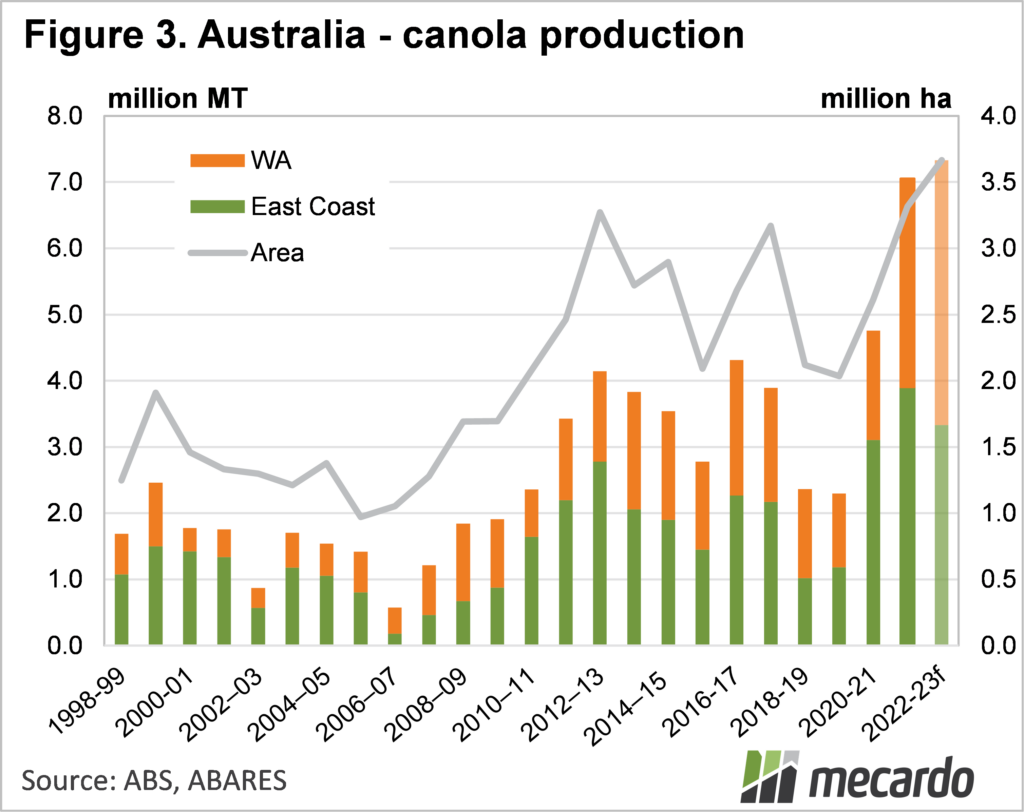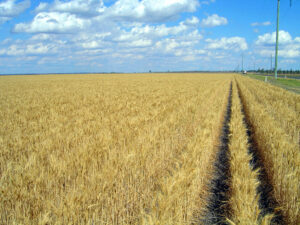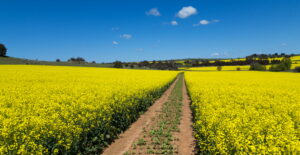The Australian Bureau of Agricultural and Resource Economics and Sciences (ABARES) released their December crop report earlier this week. The report was somewhat surprising, given the amount of coverage we’ve seen and heard about flooded crops. ABARES pegged production higher, largely thanks to South and Western Australia.
While ABARES did make some minor changes to winter cropping areas, it was in yields where the biggest differences were seen. NSW has yields and production downgraded as expected. The NSW wheat production forecast was pegged 10% lower than the September report, at 9.1 million tonnes.
The fall in NSW was made up by a 1 million tonne, or 23% lift in Victoria, with the 2 million tonne, or 41% increase in SA’s wheat production produced a massive bump for national figures. The WA wheat forecast was steady, with national wheat production forecast up 13.4% on Septembers estimate, at 36.566 million tonnes (figure 1). Figures 1 and 2 show the wheat harvest will just eclipse last year if it comes to fruition.
The story was similar for barley, which is now forecast to yield 12.25 million tonnes, up 9% on the September forecast. For barley the stronger yields still couldn’t offset the lower plantings this year, with production still forecast to be down 3.6% on 21-22.
Victoria and SA both had strong increases in expected production, up 39 and 44% respectively. This offset a 10% fall in NSW. Both Victoria and SA are now forecast to produce more barley than NSW, something which is rare outside of drought years. WA also saw barley forecasts increase, gaining 28%, or 1.2 million tonnes.
ABARES did forecast east coast canola production to be lower, thanks to rain and flood damage. It is only marginal, with the poor weather stripping just 210,000 tonnes off the forecast, leaving it at 3.33 million tonnes.
WA saw a strong 29% increase in canola production forecasts, taking the estimate to 4 million tonnes. This would more than double the five year average for WA canola production, and is due to favourable growing conditions for much of the winter and spring. The national canola crop is still expected to reach a new record this year (figure 3)
What does it mean?
Despite a horribly wet spring, Australia is on track for record in wheat and canola production. The quality of the crop remains to be seen, but there should be abundant feed wheat amongst the record production.
Heavy crops in southern states will likely result in price discount compared to NSW, where yields are likely to be weaker. This is important to understand in terms of timing of sales, especially during harvest.
Have any questions or comments?
Key Points
- ABARES crop report lifted production for major winter crops, despite the wet spring.
- Southern states and WA are expected to have increased yields, leading to record wheat and canola crops.
- Heavy crops in southern states are likely to result in price discounts at harvest.
Click on figure to expand
Click on figure to expand
Data sources: ABARES, Mecardo
Photo Credit: Tamara Ward





